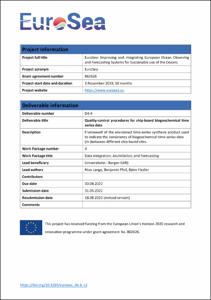| dc.contributor.author | Lange, Nico | |
| dc.contributor.author | Pfeil, Benjamin | |
| dc.contributor.author | Fiedler, Björn | |
| dc.date.accessioned | 2024-02-26T22:14:11Z | |
| dc.date.available | 2024-02-26T22:14:11Z | |
| dc.date.issued | 2023 | |
| dc.identifier.citation | Lange, Nico, Pfeil, Benjamin and Fiedler, Björn (2023) Quality-control procedures for ship-board biogeochemical time series data. EuroSea Deliverable, D4.4. [Version 2]. EuroSea Project, 20 pp. DOI https://doi.org/10.3289/eurosea_d4.4_v2 | en_US |
| dc.identifier.uri | https://repository.oceanbestpractices.org/handle/11329/2435 | |
| dc.description.abstract | This framework will be incorporated into a time-series (TS) data synthesis product. The framework will be used to indicate the consistency of biogeochemical (BGC) time-series data between different ship-based time-series sites. It differentiates between three different “consistency categories”: 1) Metadata Availability, 2) Measurement and Analyzing Techniques and 3) Applied Quality-Control (QC). For each of these categories, a flagging scheme will be implemented based upon pre-defined “consistency criteria”. All data consistency flags combined provide a comprehensive and easy to understand indication of the degree of consistency of the incorporated time-series data.
A special emphasis is put upon the third consistency category, “Applied Quality Control”, as - despite of the potential to increase the precision and accuracy of the measured data - only very few QC procedures are established within the BGC time-series community. The heterogenic nature of the time-series sites does not permit a “One-fit-all, Best-Case” QC routine, as one routine only cannot meet the needs of all time-series sites. To accommodate for this, an overarching QC guideline based upon a decision tree model has been developed, which leads to the most appropriate QC routine available. The suggested QC routines in turn are further categorized from “Best” to “Minimum”, depending on their potential to identify bad samples and/or to detect systematic biases. The guideline is applicable for all BGC ship-based time series sites and the recently developed “Regular Outlier Test” (ROT, EuroSea milestone MS13) has been incorporated and categorized as “Best”. Evaluation results of the ROT QC routines are also included. | en_US |
| dc.description.sponsorship | European Union Horizon H2020 | en_US |
| dc.language.iso | en | en_US |
| dc.publisher | EuroSea Project | en_US |
| dc.rights | Attribution 4.0 International | * |
| dc.rights.uri | http://creativecommons.org/licenses/by/4.0/ | * |
| dc.subject.other | Biogeochemical time series data | en_US |
| dc.subject.other | EuroSea | en_US |
| dc.title | Quality-control procedures for ship-board biogeochemical time series data. EuroSea Deliverable D4.4. [Version 2] | en_US |
| dc.type | Report | en_US |
| dc.description.status | Published | en_US |
| dc.format.pages | 20pp. | en_US |
| dc.description.refereed | Refereed | en_US |
| dc.identifier.doi | https://doi.org/10.3289/eurosea_d4.4_v2 | |
| dc.subject.parameterDiscipline | Chemical oceanography | en_US |
| dc.subject.dmProcesses | Data quality control | en_US |
| dc.description.currentstatus | Current | en_US |
| dc.description.sdg | 14.a | en_US |
| dc.description.maturitylevel | Mature | en_US |
| dc.description.adoption | Validated (tested by third parties) | en_US |
| dc.description.methodologyType | Specification of criteria | en_US |
| dc.description.methodologyType | Reports with methodological relevance | en_US |
| obps.contact.contactname | Nico Lange | |
| obps.contact.contactemail | nlan@norceresearch.no | |
| obps.resourceurl.publisher | https://oceanrep.geomar.de/id/eprint/59171/ | |
 Repository of community practices in Ocean Research, Applications and Data/Information Management
Repository of community practices in Ocean Research, Applications and Data/Information Management

